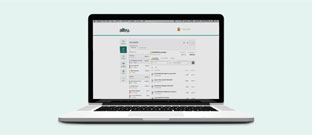Experts explain that the earlier you set children up for an allowance the better, starting around ages 4–5 (when they start to learn to count money). So, if you’re ready to start implementing a pay system to help your kids learn the value of a dollar, here are some allowance strategies to try in your household.
First, consider the 3 S’s. Spending, Saving, and Sharing
These three concepts introduce younger children to decision-making: they can choose to spend their money, save it and watch it grow, or give it away to a meaningful cause, like a local not for profit. Through this simple method, they can experience the achievement of having saved their money for a large purchase, as well as learn about altruism and selflessness through donating.
Household Tasks Earns an Allowance.
Some may argue that completing a task for cash teaches your child that making money isn’t fun, or that it might set a bad precedence that kids always deserve a reward for contributing to the household. If you’re concerned about this, make some of their weekly chores unpaid contributions to the family and create a Job Board where they can earn money for other specific chores that are above and beyond their regular tasks. This strategy encourages children to learn about what it takes to keep your house going, while understanding that an achievement can earn them money too.
Rewarding for Good Deeds.
Another way to teach children that earning money can be rewarding is to ask them to be a helper. For example, pay your child for helping a sibling with a school project or assisting an elderly neighbor. The goal through this exchange is that they can experience what it means to help someone and make a positive difference in their day. Use this as an opportunity to also explain how they can have a job that pays them for giving back and helping, like working for a nonprofit or being a nurse. Maybe this will help them decide what they want to be when they grow up!
The Cost of Borrowing.
Once your allowance system becomes routine, you can introduce the concept of interest to build on their financial literacy. Explain that “taking out a loan” or “using credit” is now an option. If your child doesn’t have enough cash to buy something special, they can borrow money from the “bank” (mom or dad) to cover the cost. The catch is that they must do an extra chore or task, which symbolizes interest. So, they’ll have to pay the borrowed amount back, plus extra, because borrowing money isn’t free.
The Points System.
This allowance system uses points as currency. The idea is to teach the importance of planning ahead for a purchase your child really wants, rather than impulse spending on little things here and there. Decide what they want to buy, how many points it’ll “cost” and what chores they’ll have to do to earn those points. Imagine that the goal is to collect 100 points to buy a bike. By using points instead of money, they can’t be tempted to pull out $10 for a toy during a Target run.
Earning an allowance is a beginner’s lesson on money, and from there you can continue to build on that financial education with lessons on paying bills, budgeting, and using a debit and credit card. If you can help your kids understand how and why they should use money responsibly at an early age, you can help them avoid making major money mistakes as they grow into adulthood. No matter what type of allowance system you set up, you’re teaching your child the value of money and its purpose.
Good Luck,

Chelsea Springli







